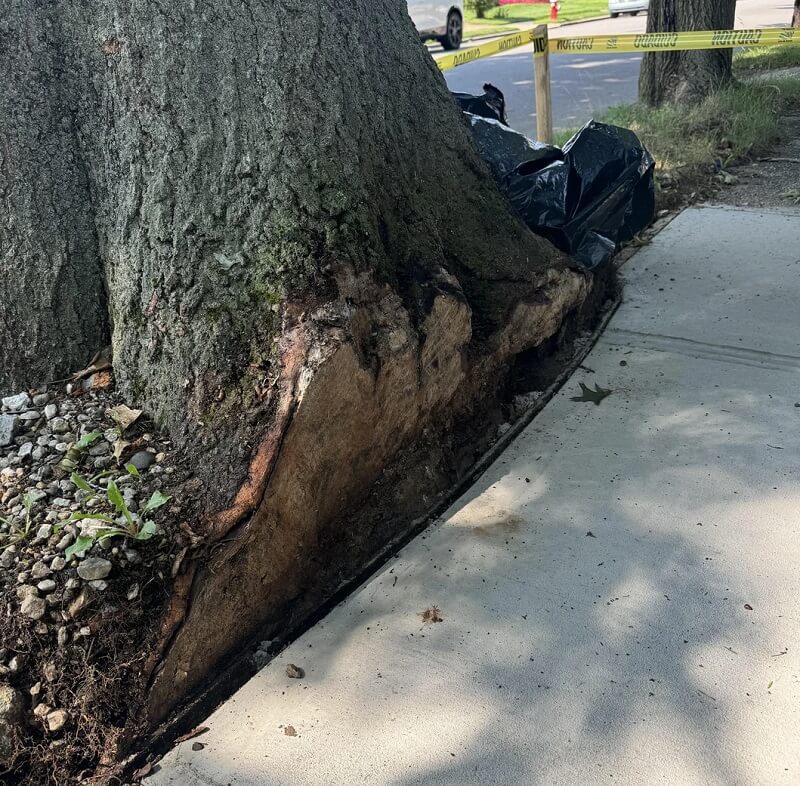A sidewalk repair job in Hicksville, New York, has sparked a passionate debate online after the "solution" to a tripping hazard created what many call a far more dangerous situation.
The post, shared on Reddit's active r/arborists community, shows a massive pin oak tree with its base drastically cut away to make room for a new sidewalk. The image has left many viewers stunned and concerned about the tree's stability.

"At least nobody will trip on the sidewalk now," the original poster wrote sarcastically.
The Redditor explained that the town had required a client to fix the sidewalk because it was a tripping hazard. The solution? Cutting away a significant portion of the tree's base to accommodate the new concrete path.
While the sidewalk may no longer pose a tripping hazard, arborists and tree enthusiasts are pointing out that this "solution" has likely created a much more serious safety issue. By removing such a large portion of the tree's supporting structure, the risk of the tree falling has skyrocketed.
This situation highlights the often overlooked importance of urban trees and the challenges of balancing infrastructure needs with environmental preservation. Urban trees provide numerous benefits, from improving air quality and reducing urban heat to supporting local wildlife and enhancing property values.
Properly maintained trees benefit homeowners and the environment. They lower energy bills by providing shade, reducing stormwater runoff, and creating a more appealing streetscape. When conflicts arise between trees and infrastructure, a clever solution is often needed to preserve both.
The r/arborists community quickly offered alternative approaches that could have addressed the sidewalk issue without compromising the tree's foundation.
One commenter suggested, "There were still other options and ways to do this. More gradual slope with soil added and concrete laid for a smooth transition comes to mind."
Others expressed their concern about this decision's long-term consequences. "Then, while repairing the sidewalk, they should have removed the tree. Now it's a life-safety hazard until the day it finally falls," another user pointed out.
A third commenter summarized the situation's irony: "They might not trip on the sidewalk, but I wonder how they'll feel when that tree falls on them."
It's important to consult with arborists and urban planners when addressing conflicts between nature and infrastructure. But by working together, we can find solutions that keep our communities safe while preserving the valuable trees that make our neighborhoods greener, healthier, and more liveable.
Join our free newsletter for easy tips to save more and waste less, and don't miss this cool list of easy ways to help yourself while helping the planet.









